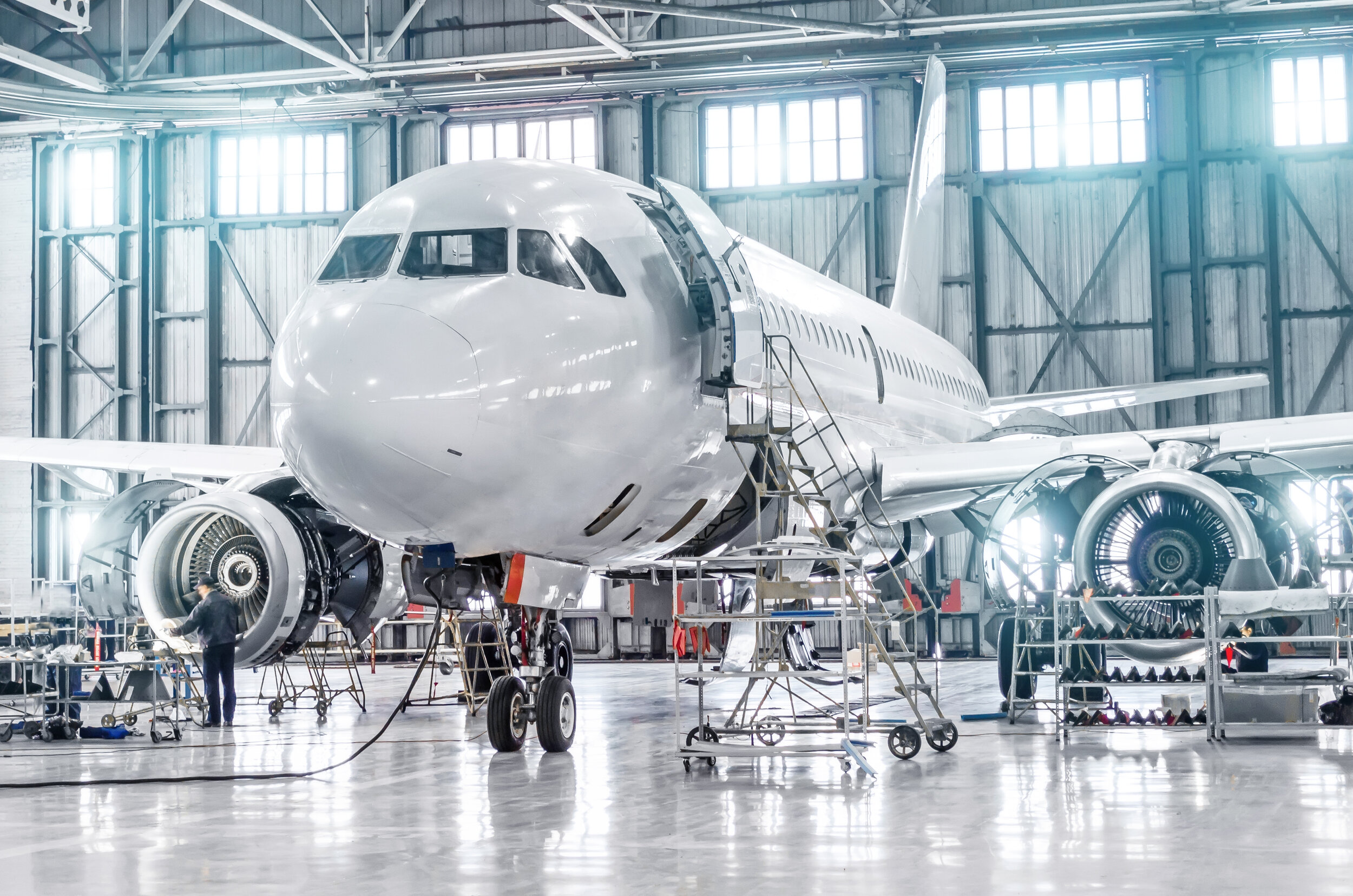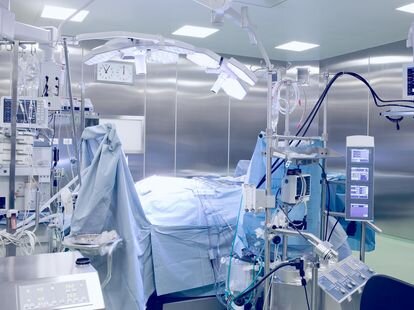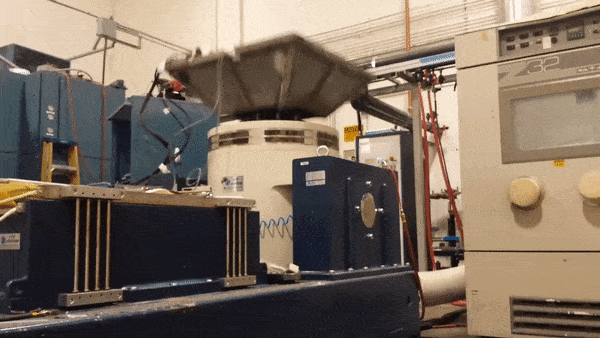ETS I Series is designed to meet military and international test standards including MIL, ASTM, IEC, ISO, BS and JIS.
The I Series also meets typical vibration test requirements of other medium to large sized electronic assemblies, automotive parts, aviation and avionics parts.
The Extreme Acceleration Shaker Y-Ring (EAS-Y Ring) armature is a revolutionary design which will allow using a proportioned head expander to test multiple specimens simultaneously yet achieving good vibration transmissibility ratio.
Other test requirements including transportation, vibration, simulation combined vibration-climatic test and seismic simulations for small size components can easily be fulfilled by the ETS I Series.
ETS I series vibration testing system is designed to test payloads of up to 500kg.
Design features meet the testing requirements of small components to medium sized test specimens for the automotive, aviation, military, medical and electronic manufacturing industries.
ETS I Series shaker system is suitable for applications where it is required to:
Perform Random Test above 50grms
Perform Sine Test above 70g peak
Perform the different mixed mode test (sine on random, random on random, sine and random on random)
The system is suitable to comply with the widely accepted MIL-STD-810 standard.
A Brief Introduction to MIL-STD-810 Standard
MIL-STD-810, Environmental Engineering Considerations and Laboratory Tests is a United States Military Standard that emphasizes tailoring the equipment's environmental design and test limits to the conditions that it will experience throughout its service life, and establishing chamber test methods that replicate the effects of environments on the equipment rather than imitating the environments themselves.
The MIL-STD-810 test series are approved for use by all departments and agencies of the United States Department of Defense (DoD).
Although prepared specifically for military applications, the standard is often used for commercial products as well.
Various types of tests that can be performed are as follows:
1.Development Test
Development testing is used to determine characteristics of materiel, to uncover design and construction deficiencies, and to evaluate corrective actions.
Begin as early as practical in the development, and continue as the design matures.
The ultimate purpose is to assure developed materiel is compatible with the environmental life cycle, and that formal testing does not result in failure.
The tests have a variety of specific objectives. Therefore, allow considerable freedom in selecting test vibration levels, excitation, frequency ranges, and durations. Typical programs might include modal analysis to verify analytical mode shapes and frequencies, and sine dwell, swept sine, transient, or random excitation transient vibration to evaluate function, fatigue life, or wear life.
The test types, levels, and frequencies are selected to accomplish specific test objectives. Levels may be lower than life cycle environments to avoid damage to a prototype, higher to verify structural integrity, or raised in steps to evaluate performance variations and fragility.
2. Qualification Test
Qualification testing is conducted to determine compliance of a material with specific environmental requirements.
Such tests are commonly a contractual requirement and will include specific test specifications. Qualification tests should be conducted using an excitation that has the same basic characteristics as the anticipated service environment.
For most items, this consists of a functional test and an endurance test (sometimes combined). The functional test represents the worst case vibration (or envelope of worst case conditions) of the environmental life cycle. The endurance test is a fatigue test representing an entire life cycle. Often, vibration can be combined with other environmental stresses.
2.1 Functional Test
Functional testing is conducted to verify that the material is functioning as required while exposed to worst case operational vibration. Full function verification is performed at the beginning, middle and end of each test segment.
2.2 Endurance Test
Endurance testing is conducted to reveal time-dependent failures. In many cases the test is accelerated in order to produce the same damage as the entire duration of the required service life.
Generally, it is not required to have an item powered-up during the endurance phase of test. We define the test time at maximum service levels (functional levels) that is equivalent to a vibration lifetime (levels vary throughout each mission). Use the equivalent time as the functional test duration, thereby combining functional and endurance tests.
There may be cases when this test duration is too long to be compatible with program restraints. In these cases, use as long of a test duration as is practical and use the fatigue relationship to define the test level.
While this approach does not completely eliminate nonlinearity questions, it does limit levels to more realistic maximums. Generally, the test item will not be in a powered-up state during the endurance (“non-operating”) phase of testing; particularly in a situation in which the test levels have been exaggerated beyond maximum measured values in order to significantly compress the test duration.
3. Durability test
Durability testing is a real-time (non-exaggerated) simulation of the environmental life cycle to a high degree of accuracy.
A durability analysis precedes the test and is used to determine which environmental factors (vibration, temperature, altitude, humidity, etc.) must be included in the test to achieve realistic results.
Although the test is intended to be a real time simulation of the life cycle, it may be shortened by truncation if feasible. Truncation is the elimination of time segments that are shown by the durability analysis to be benign with regard to materiel function and life.
Durability analyses should use fatigue and fracture data applicable to each material.
4. Reliability test
Reliability testing is accomplished to obtain statistical definitions of materiel failure rates. These tests may be development tests or qualification tests.
The accuracy of the resulting data is improved by improving realism of the environmental simulation.
Test requirements are developed by engineers responsible for materiel reliability.
5. Worthiness test
When unqualified materiel is to be evaluated in the field, verification that the materiel will function satisfactorily is normally required for safety and/or test efficiency reasons. This is accomplished by environmental worthiness test.
The worthiness test is identical to a qualification test except that it covers only the life cycle of the field evaluation.
Levels are usually typical operating levels unless safety is involved; then maximum operating levels are necessary. Durations are either equivalent to a complete system/subsystem test, long enough to check materiel function, or an arbitrary short time (5 or 10 minutes).
For safety driven worthiness test, the test item is considered to be consumed by the test (the test item may not be used in the field). An identical item of hardware is used in the field evaluation.
When safety is not an issue, an item may be subjected to a minimum time functional test and then used in the field evaluation. When it is required to evaluate the cumulative environmental effects of vibration and environments such as temperature, altitude, humidity, leakage, or EMI/EMC, a single test item should be exposed to all environmental conditions.
For air worthiness testing, a three step approach may be required.
For example, this could include conducting and initial laboratory vibration test, followed by experimental flight testing to acquire the actual exposure levels, and ending with a qualification test based on the measured field data.
Benefits of Vibration Testing
Some key benefits of vibration testing are:
Reduce product development time
Ensure new products are fit for purpose
Reduce in-plant rework due to QA rejection
Reduce damage in transit and subsequent rejection by the customer
Reduce marginal or non-performance rejection under Warranty
Reduce legal costs and damage claims due to incorrect operation of the product
Maintain a good reputation for the company and its products
Maintain profit margins













